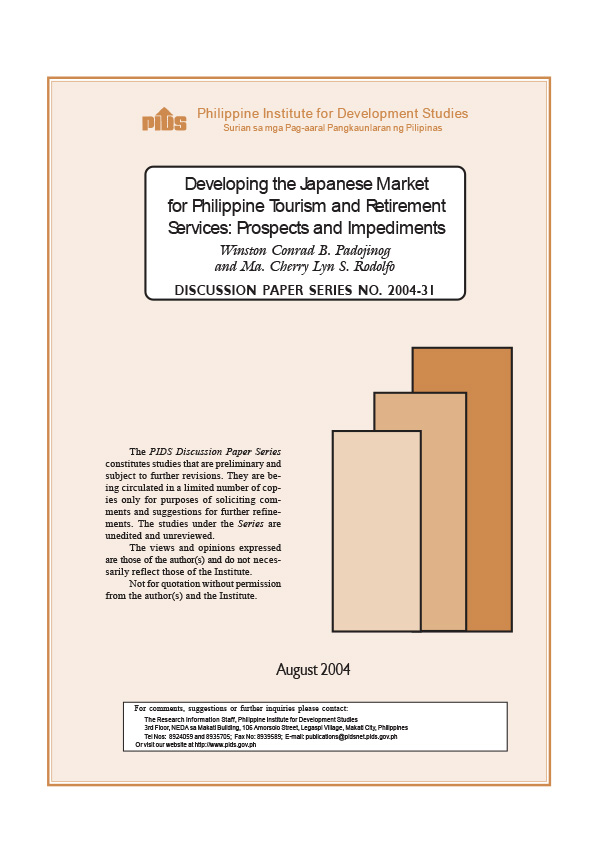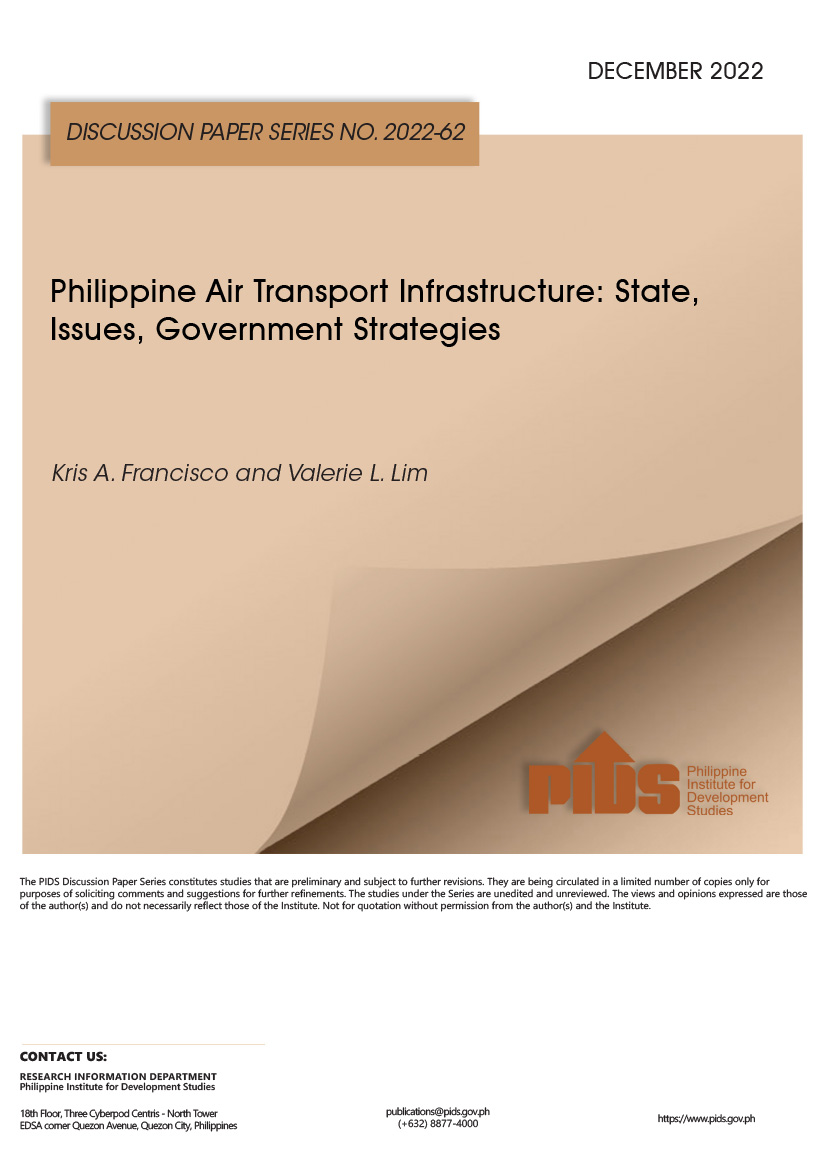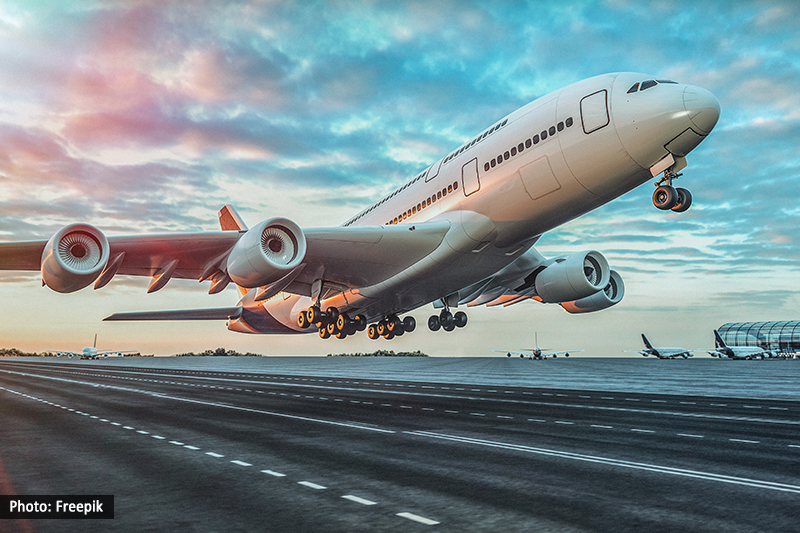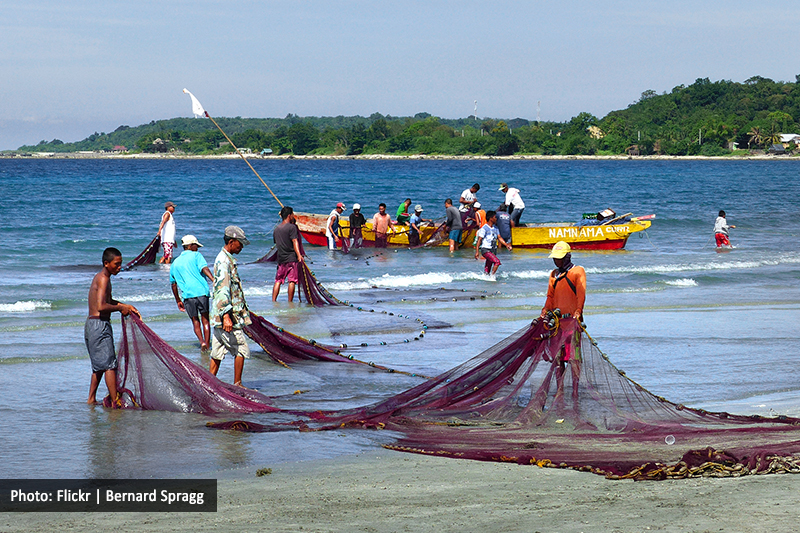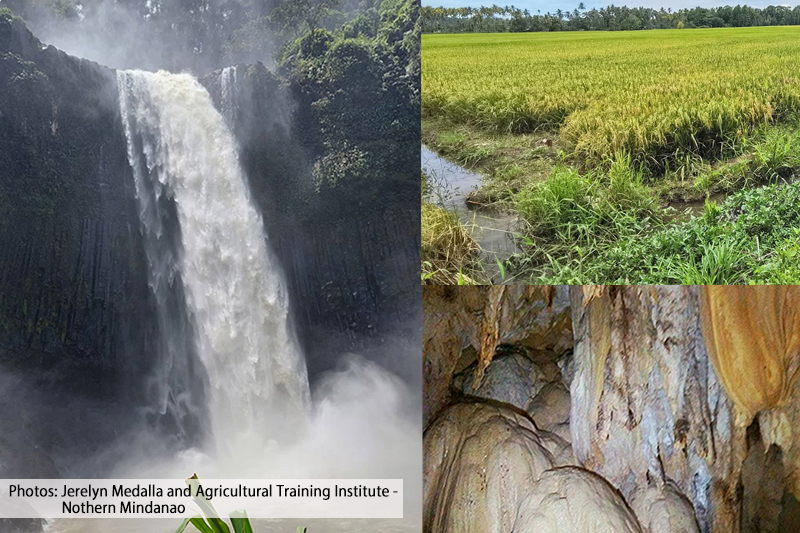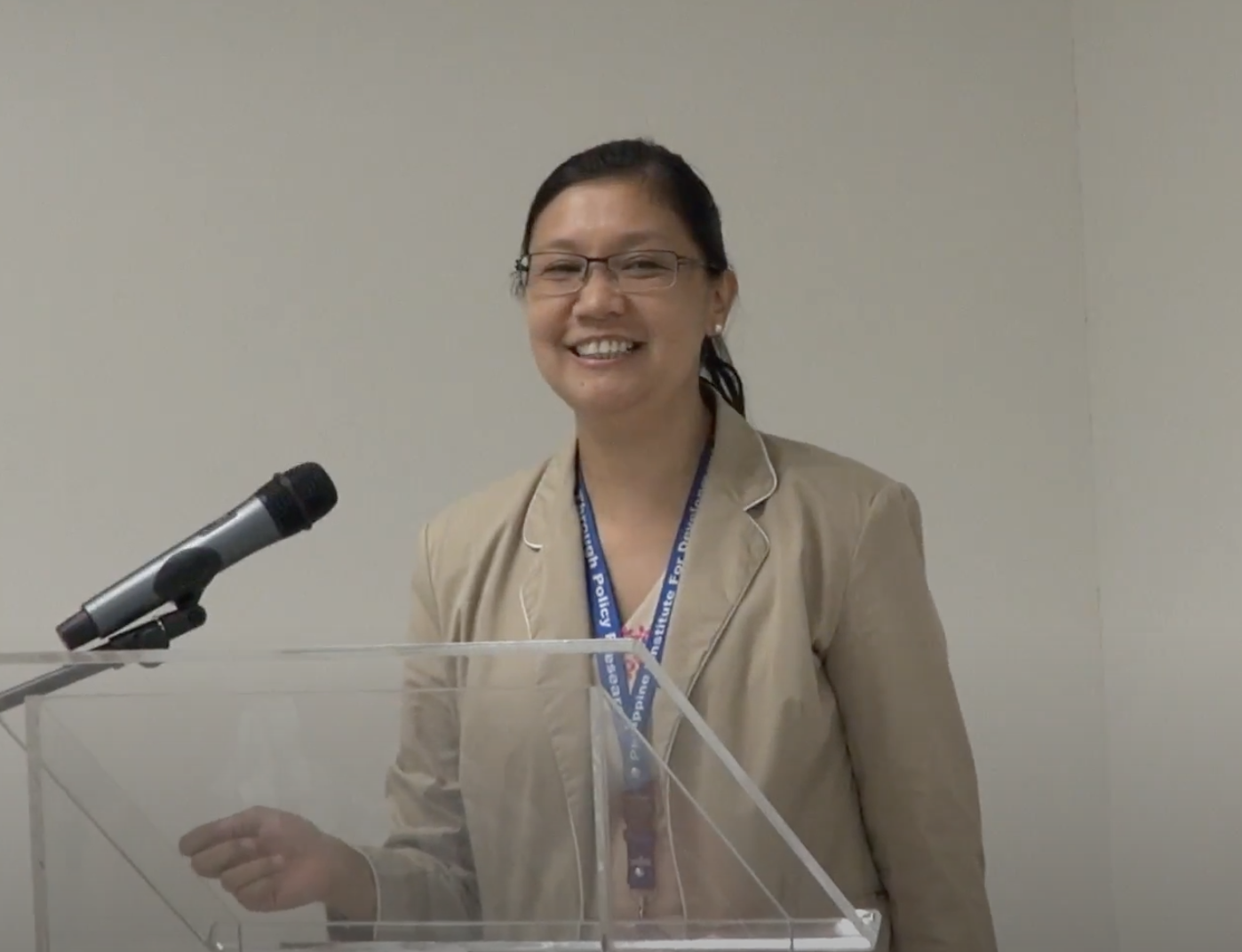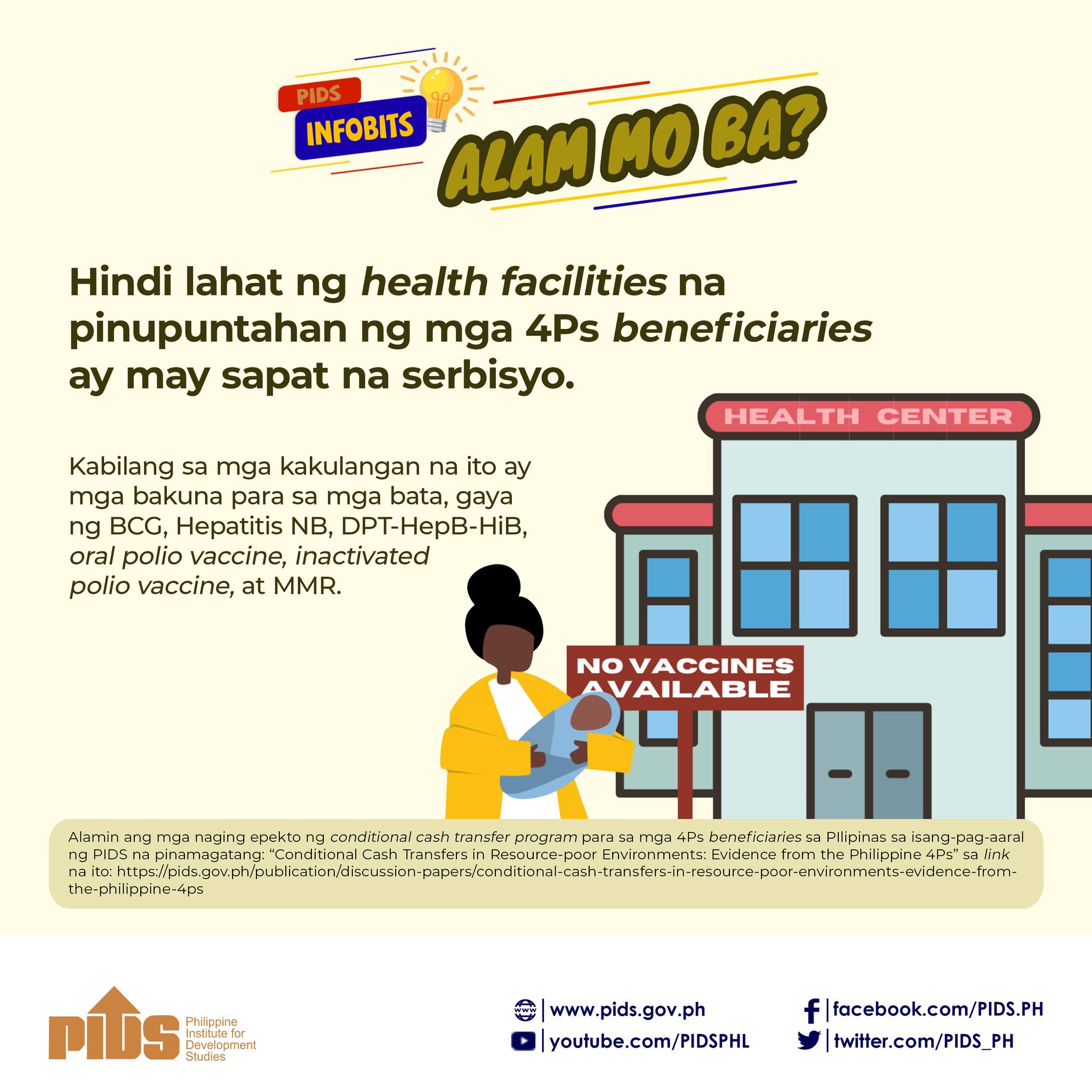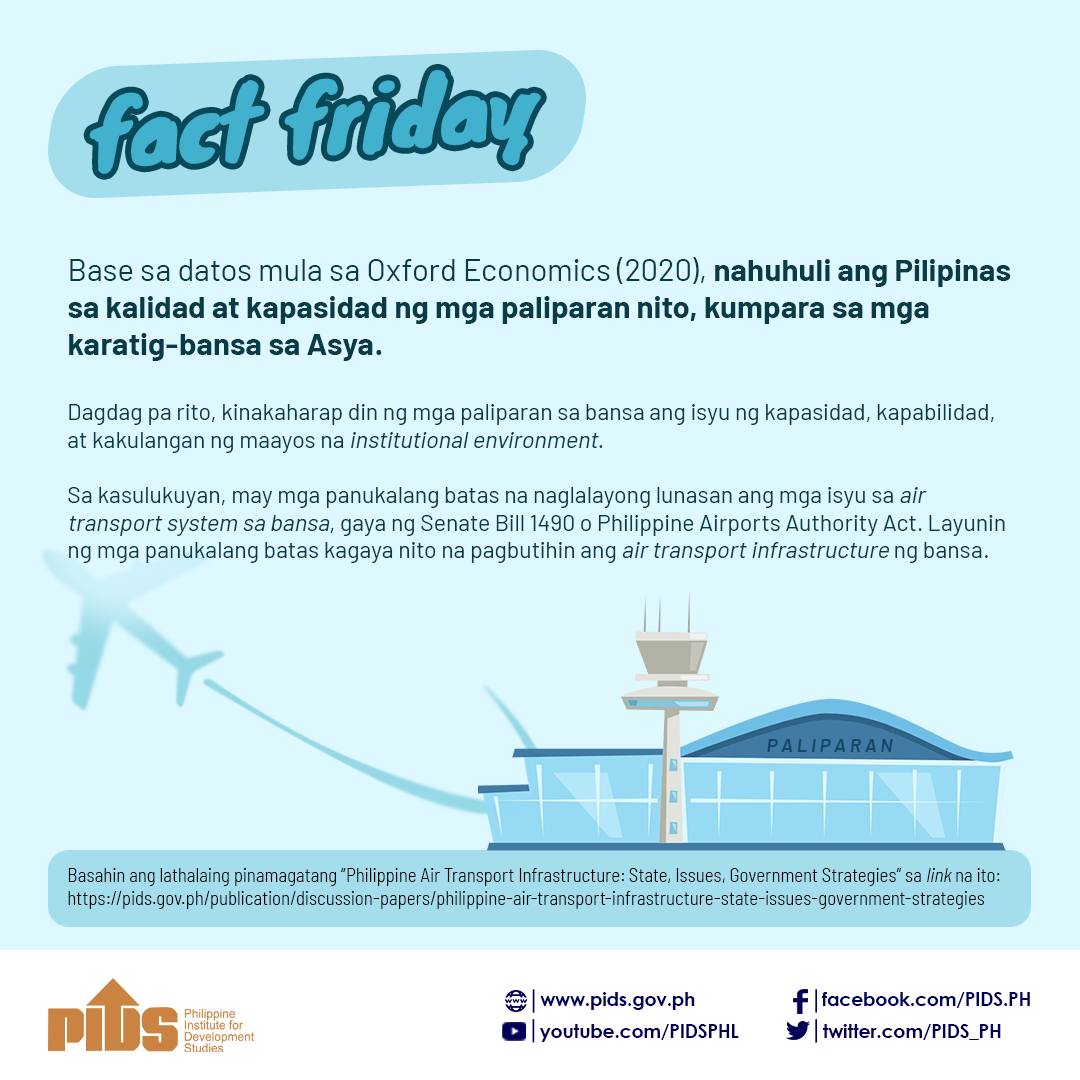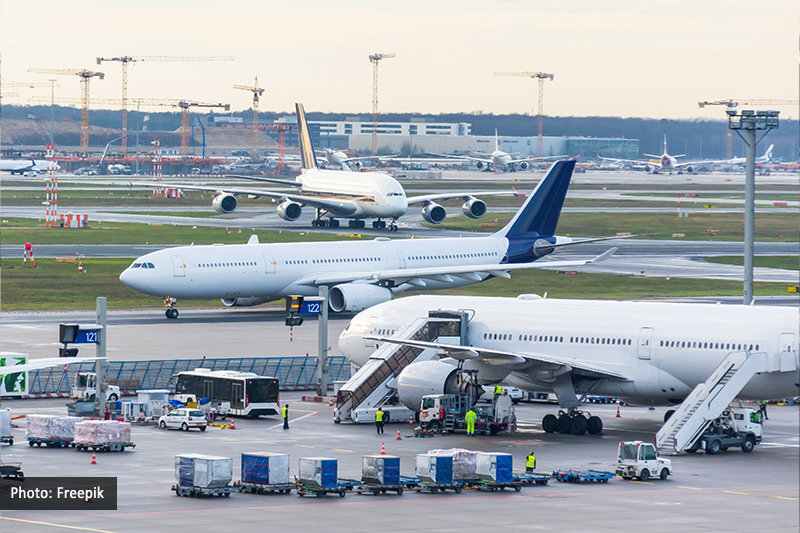
The government and stakeholders must find immediate solutions to improve and modernize the Philippine airport infrastructure to draw more tourists into the country.
This was emphasized at a recent webinar organized by the Philippine Institute for Development Studies (PIDS), which featured the study “Philippine Air Transport Infrastructure: State, Issues, Government Strategies” by PIDS Research Fellow Kris Francisco and Research Analyst Valerie Lim. It assessed the current state of the Philippine air transport infrastructure and reviewed government plans and programs seeking to improve the performance of the air transport sector, given its enabling role in high-value industries such as trade, manufacturing, and tourism.
“Having an efficient air transport infrastructure and an enabling air transport sector is important for a developing country like the Philippines, where tourism is a major contributor to the economy and provides employment opportunities for the population,” the authors said.
Citing Philippine Statistics Authority and Department of Tourism data, they noted that the tourism sector accounts for 13.6 percent of the country’s total employment and 12.8 percent of the economy’s gross value added.
“Perhaps, the air transport’s most valuable contribution to the Philippine economy is its role as the backbone of the tourism industry,” Francisco said.
Cebu Air Chief Strategy Officer and Cebgo President and Chief Executive Officer Alex Reyes, who served as a webinar discussant, echoed this statement. “Air transport is an important enabler of other industries such as tourism. Given our [country’s] stage of economic development, having a robust tourism industry and an efficient air transport infrastructure is a great match,” he said.
He added that tourism absorbs the local labor surplus, which leads to better rural incomes by “lift[ing] a lot more people out of poverty”.
Meanwhile, fellow discussant Dr. Henry Basilio of the University of the Philippines-National College of Public Administration and Governance said that an aggressive stance on negotiating for air service agreements (ASA) must be taken to enhance the tourism sector further.
ASAs are agreements where states grant airline operators the authority, permission, or license to operate an air service.
“[If] you negotiate for more ASA, you will have more seats for passengers, leading to a greater pressure on your existing airport infrastructure,” Basilio said.
The country’s air seats rose from 200,000 in 2013 to 525,000 in 2015.
Civil Aeronautics Board Chief Administrative Officer Atty. Rhea Joy Morales-Gonzalez, also a discussant at the webinar, underscored that a broader tourism campaign could encourage more investments in the air transport industry.
“Airports will be established in tourism clusters identified by the Department of Tourism to support local tourism development. A hub and spoke model will be followed in air development in regional areas and island provinces with natural and cultural tourism sites,” she said.
Morales-Gonzalez added that air transport could be further improved using the “traffic revision strategy”, where the government revisits policies for airlines operating in a particular airport.
Watch the webinar at https://fb.watch/j_cc_Eh1Gn/ and https://youtu.be/I7BMUkeNLbU.
For more videos of PIDS events, go to https://pids.gov.ph/videos. ###

